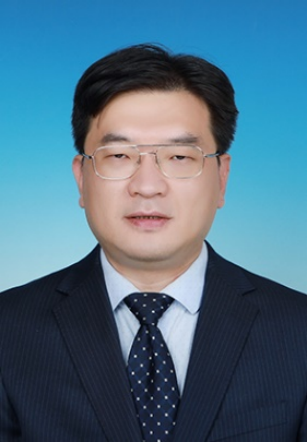Peking University Institute of Cardiovascular Sciences
Qiang Zhao

Qiang Zhao, Professor
Contact Information
Email: qiangzhao@bjmu.edu.cn;
Tel:010-82805398
Research interest
Cardiovascular biomaterials and regenerative medicine.
Brief introduction
Prof. Zhao completed his PhD in Materials Science & Engineering at Tianjin University in 2006. Following a three-year postdoctoral fellowship at City University of Hong Kong, he was appointed as Associate Professor at Nankai University in 2009 and promoted to Full Professor in 2014. In 2025, he joined Peking University as a Boya Distinguished Professor. His work bridges materials science and chemical biology to develop therapeutic biomaterials and advanced technologies for cardiovascular repair and relevant disease treatment. Prof. Zhao has authored over 100 SCI-indexed papers, including papers in top-ranked journals such as Science Translational Medicine, Nature Chemical Biology, Science Advances, Nature Communications, Cell Reports, alongside six book chapters and more than 10 patents granted or pending. He leads over 20 national-level research projects, including National Key R&D Program, NSFC Key Project, NSFC Distinguished Young Scholar program, and others.
Research outputs
Selected publications:
1. Wei Y, Jiang H, Li F, Chai C, Xu Y, Xing M, Deng W, Wang H, Zhu Y, Yang S, Yu Y, Wang W, Wei Y, Guo Y, Tian J, Du J, Guo Z*, Wang Y*, Zhao Q*. Extravascular administration of IGF1R antagonists protects against aortic aneurysm in rodent and porcine models. Sci Transl Med 2024, 16:eadh1763.
2. Hou J, Pan Y, Zhu D, Fan Y, Feng G, Wei Y, Wang H, Qin K, Zhao T, Yang Q, Zhu Y, Che Y, Liu Y, Cheng J*, Kong D, Wang PG, Shen J*, Zhao Q*. Targeted delivery of nitric oxide via a “bump-and-hole”-based enzyme-prodrug pair. Nat Chem Biol 2019, 15:151-60 (recommended by F1000).
3. Zhu D, Hou J, Qian M, Jin D, Hao T, Pan Y, Wang H, Wu S, Liu S, Wang F, Wu L, Zhong Y, Yang Z, Che Y, Shen J, Kong D, Yin M*, Zhao Q*. Nitrate-functionalized patch confers cardioprotection and improves heart repair after myocardial infarction via local nitric oxide delivery. Nat Commun 2021, 12:4501.
4. Hao T, Ji G, Qian M, Li QX, Huang H, Deng S, Liu P, Deng W, Wei Y, He J, Wang S, Gao W, Li T, Cheng J, Tian J, Pan L, Gao F*, Li Z*, Zhao Q*. Intracellular delivery of nitric oxide enhances the therapeutic efficacy of mesenchymal stem cells for myocardial infarction. Sci Adv 2023, 9:eadi9967.
5. Wang F, Qin K, Wang K, Wang H, Liu Q, Qian M, Chen S, Sun Y, Hou J, Wei Y, Hu Y, Li Z, Xu Q*, Zhao Q*. Nitric oxide improves regeneration and prevents calcification in bio-hybrid vascular grafts via regulation of vascular stem/progenitor cells. Cell Rep 2022, 39:110981.
6. Huang H, Qian M, Liu Y, Chen S, Li H, Han Z, Han Z, Chen X, Zhao Q*, Li Z*. Genetically engineered mesenchymal stem cells as a nitric oxide reservoir for acute kidney injury therapy. eLife 2023, 12:e84820.
7. Midgley AC, Wei Y, Li Z, Kong D, Zhao Q*. Nitric oxide–releasing biomaterial regulation of the stem cell microenvironment in regenerative medicine. Adv Mater 2020, 32:1805818.
8. Hao T, Qian M, Zhang Y, Liu Q, Midgley AC, Liu Y, Che Y, Hou J, Zhao Q*. An injectable dual-function hydrogel protects against myocardial ischaemia/reperfusion injury by modulating ROS/NO disequilibrium. Adv Sci 2022, 9:2105408 (ESI Highly cited paper).
Major research grants:
1. National Key R&D Program of Ministry of Science and Technology of China (No. 2018YFE0200500),¥8,340,000 for “ Rational design and medical application of engineered enzymes based on the ‘bump-and-hole’ strategy ” (Principal Investigator).
2. National Natural Science Fund for Distinguished Young Scholar (No. 81925021),¥4,000,000 for “ Cardiovascular biomaterials ” (Principal Investigator).
3. Key Project of National Natural Science Foundation of China (No. 82330066),¥2,830,000 for “Chemical biology strategies for the treatment of aortic aneurysm via regulation of sulfur metabolism and mechanisms” (Principal Investigator).

